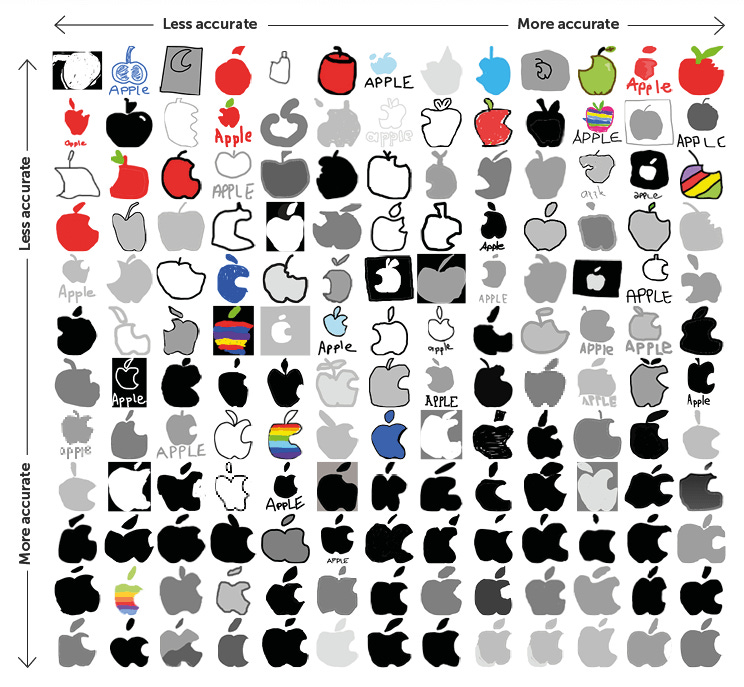Two ways to extend your research team's capacity
And the forgettable blandness of modern user experience

We’ve recently observed demand for UX research grow by 25% year over year—a pace which, if sustained, could double the size of our field every three years.
Will we have enough researchers to meet the demand? Since nearly three-quarters of current researchers come from the sliver of the general population with advanced degrees, we may need to consider ways to educate, train, and certify new researchers.
But we can also find ways today to further stretch the resources we already have.
That doesn’t have to mean overtime or a relentless obsession with efficiency. Instead, this article will explore research democratization and automation as two promising paths to augmenting UXR teams.
1. Democratizing research
Though it can look different among organizations, research democratization is the practice of enabling non-researchers, usually product managers or UX designers, to conduct their own research. On its face, the premise is tempting, as UX designers outnumber researchers in most organizations by a ratio of 5 or more to 1.
Democratization has been a highly contentious concept from its earliest beginnings. Some draw a hypothetical parallel with other disciplines to imply the absurdity of the premise, such as giving non-engineers a week of training and then allowing them to do an engineer’s job.1 And in an era marked by growing specialization, it can feel like regressing to the “bad old days” when every UX job posting sought the mythical unicorn who can do it all.
Indeed, one risk is inadvertently creating a culture that undervalues specific research expertise.
But UX teams may be motivated to try this approach for different reasons. Some want to reduce or entirely eliminate a specialized research function. Others want to free up dedicated UX research specialists to focus on more complex or strategic projects.
Democratization can be successful (as is self-reported by research leaders within these organizations) with careful planning and meaningful guardrails. Examples of this often include at least one, or a combination, of the following: formal instruction programs or “research academies,” project templates or “recipes,” special provisioning that gives users limited access to research tools, individualized coaching, or a “buddy system” for quality assurance.
The component skills of a research practice exist on a continuum of low- to high-complexity. So motivated non-researchers with the right background and personality should be at least as capable as junior researchers at learning and executing low-complexity skills. And many UX designers who have received some formal training will have already been exposed to basic research methods.
However, democratization should not be seen as a silver bullet or even a simple solution. It takes serious thought—and what works well in one organization may not work for another.
2. Automating research
Will artificial intelligence make UX researchers obsolete?
For the foreseeable future, that’s doubtful. One consensus view among AI experts is that artificial and human intelligence both have formidable strengths, but are in many ways fundamentally different. Although AI will likely displace human labor in many tedious rote roles, great UX research requires creativity, inventiveness, and insight—all areas where AI struggles without human partners.
Indeed, in many domains, a collaborative human-AI team has proven to be the ideal combination, performing better than either would separately.
For example, the world was shocked when IBM’s DeepBlue beat chess grandmaster Garry Kasparov in 1997. Fewer will recall the PAL/CSS Freestyle Tournament in 2005, in which a team of amateurs who had trained extensively with a chess AI were able to beat three grandmasters (who were using AIs themselves)!
For UX research, there are already AI tools that assist in various phases, whether in the set-up (like Sonar) or analysis (like Resultid and Cactus). But these tools are still in their infancy. As these and new offerings mature in the years to come, UX researchers will have more of their time freed up to spend on activities that contribute greater value.
Even now, there are automated technical approaches that UX researchers can use to get some time back. Many researchers already incorporate some usage of product analytics (e.g., using a tool like Hotjar). Others keep ongoing usability studies using data collection methods like intercepts.
We can also explore recent developments to modeling techniques from the past. For example, in Keystroke-Level Modeling (KLM), researchers would decompose a task (as in a traditional task analysis) into its discrete “operators,” such as moving a cursor, pointing, and clicking. This not only reveals redundant or complex processes, but can be used to estimate how long a skilled user would take to perform the task.
Cogulator is a free, open-source tool developed by MITRE to conduct KLM-style analyses. Its “magic models” feature allows users to simply “demonstrate to Cogulator how a task is completed on a desktop/laptop computer or touchscreen device (e.g., iPhone). Cogulator then automatically generates the [analysis] for you,”2 taking much of the manual work out of the process.
Whether help comes from artificial intelligence or less sophisticated automations, many opportunities already exist to offset some of the labor currently done by UX researchers and create space for more strategic thinking.
TL;DR
Overstretched research teams can create some leverage by democratizing and automating research.
Research democratization is the practice of enabling non-researchers, such as product managers and designers, to conduct research on their own. Some organizations have struggled to implement this practice, and many researchers find it controversial. When done successfully, however, it’s typically limited in scope with instruction and quality assurance checks as guardrails.
Automations in UX research can take many forms. Researchers may use automated data collection tools, whether intercepts or product analytics. The current options are few and still in the early stages of development, but other more sophisticated tools using artificial intelligence may eventually prove invaluable at different stages of projects.
Implementing either, or a combination, of these options can offer an effective approach for giving time back to researchers and enabling them to deliver more valuable insights to their organizations.
This is the third and final installment of a series. In the first, we talked about how current hiring practices may create a potential labor shortage in our field and undesirable second-order effects on other disciplines. And in the second, we looked at three ideas to expand the supply of researchers.
Your product isn’t as memorable as you think
Major corporations spend millions on advertising with the goal of keeping their brands at the forefront of consumers’ minds. But what’s the return on that investment? How many ordinary people will be able to recall those brands later on?
That’s what researchers at signs.com set out to learn:
We asked over 150 Americans to draw 10 famous logos from memory as accurately as they could. … The results reveal that, far from being stamped perfectly in our collective memory, these ubiquitous emblems largely exist as fuzzy visions in our mind's eye. One in 5 people thinks the Foot Locker referee wears a hat (he doesn't), and nearly half of people believe the Starbucks mermaid does not wear a crown (she does).
Looking at the drawings for each company’s logo, the overall pattern of results isn’t too surprising. People recall the general gist of logos, but aren’t always concerned with the details.
Perhaps there’s a connection here with Jakob’s Law: “Users spend most of their time on other sites.” There are a lot of companies out there competing for a sliver of your mind.
And design in general has trended towards greater sameness and conformity since iOS 7 discarded skeuomorphism in 2013. Even the logos themselves are looking more and more alike.
N.B.: This suggestion is often seriously made when leaders suggest that “everyone should learn to code.”
From Cogulator’s white paper


